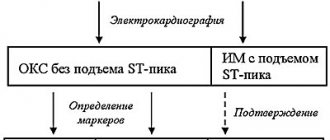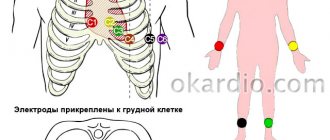ALT analysis
An analysis to determine the concentration of this substance in the body is used to diagnose liver disease and monitor the effectiveness of prescribed therapy. The main indication for the study is suspicion of acute or chronic hepatitis of viral or toxic origin, cirrhosis of the liver, primary malignant neoplasms of the organ or secondary metastatic lesions.
The growth of this substance in the body during hepatitis begins much earlier than the disease enters the icteric stage. In this way, it is possible to diagnose the disease at an early stage and begin treatment in a timely manner.
The analysis is also carried out as part of a comprehensive screening examination in order to assess the condition of the liver. The study is carried out before planned hospitalization for surgical treatment. The analysis is prescribed in conjunction with an aspartate aminotransferase test.
The level of ALT must be assessed together with other enzymes in pathologies of the pancreas and gallbladder - pancreatitis, cholecystitis, cholelithiasis. An analysis may be prescribed if the patient complains of general weakness of unknown etiology, fatigue, icteric skin and sclera, abdominal pain, a feeling of heaviness in the right hypochondrium, nausea, vomiting.
This analysis should also be performed in case of myocardial infarction and myocarditis. But in case of heart damage, assessing the ALT level is of secondary importance. The study is prescribed if the patient is suspected of myositis, myodystrophy, pain in the heart muscle, which cannot be explained by excessive physical exertion or another objective reason.
All donors are required to undergo this test.
The concentration of the level of this substance in the body must be assessed in case of chronic diseases, before prescribing medications - antitumor, antituberculosis. The study is also prescribed to assess the condition of the liver over time to assess the tolerability of a particular drug.
ALT
The full name of the enzyme is alanine aminotransferase. From the name it is clear that this protein transports the amino acid alanine. Mainly found in the liver, as well as in the cells of the heart, pancreas, kidneys, and muscles.
Normal in blood
The acceptable values are different for women and men:
- for women the norm is no higher than 32 units/liter;
- for men – less than 40 units/liter.
For children of different ages, the norms are different:
- in the first five days of life – up to 49 units/liter;
- up to six months – 56;
- from six months to a year – 54;
- from one to three years – 33;
- from three to six years – 29;
- from six to 12 – not higher than 39.
Reasons for the increase
A high level of ALT is characteristic of the following pathologies:
- cirrhosis of the liver;
- acute hepatitis (viral, alcoholic);
- acute pancreatitis;
- malignant liver tumor or metastases;
- obstructive jaundice;
- tumor disintegration;
- extensive heart attack;
- heart diseases in which destruction of heart muscle cells occurs (heart failure, myocarditis);
- burns;
- extensive traumatic muscle damage.
A slight increase is observed in the following cases:
- after heart surgery;
- with uncomplicated heart attack;
- chronic hepatitis;
- fatty hepatosis;
- mononucleosis.
In addition to pathological reasons for increased ALT levels, there are physiological ones. These include:
- great physical activity;
- taking certain medications (antibiotics, valerian, echinacea, nonsteroidal anti-inflammatory drugs, contraceptives);
- taking certain dietary supplements that negatively affect liver cells;
- a slight increase may be observed in pregnant women in the first trimester (this condition is considered normal);
- poor nutrition (presence of fast food, soda, processed foods in the diet).
ALT transaminase in the blood is a marker of liver disease
This indicator is of particular importance in the diagnosis of liver diseases. A high level of ALT is a specific sign of liver pathology. Already 1-4 weeks before the onset of symptoms, an increased content of this enzyme is detected in the blood. In the case of acute liver disease, it exceeds the norm by more than five times. If a high level persists for a long time or increases in the later stages of the disease, this indicates massive destruction of liver tissue.
This indicator allows you to identify such a dangerous disease as cirrhosis of the liver at an early stage. As a rule, this pathology does not have symptoms for a long time, and only with the help of a biochemical blood test based on a high ALT level can such a diagnosis be suspected. In this case, the norm is exceeded, as a rule, three times.
ALT analysis is indicated:
- when diagnosing pathologies of the liver, biliary tract, pancreas;
- to monitor the treatment of viral hepatitis;
- in the differential diagnosis of hepatic and hemolytic jaundice;
- for heart failure and other heart diseases;
- with pathologies of skeletal muscles;
- when examining donor blood.
The test is prescribed for people with the following symptoms:
- constant weakness;
- rapid onset of fatigue;
- poor appetite;
- dark urine and light feces;
- yellowness of the skin and whites of the eyes;
- bloating;
- nausea, vomiting;
- abdominal pain.
An ALT test may be prescribed for people at risk:
- had contact with a patient with hepatitis;
- suffering from diabetes mellitus;
- having excess weight;
- those suffering from alcohol addiction;
- taking medications with toxic effects;
- people with a hereditary tendency to liver disease.
It is important to know that a normal ALT level does not guarantee the absence of liver disease.
Deciphering the ALT analysis
Alanine aminotransferase reference values for adults:
| Norm in U/l | Norm in mmol/l | |
| men | 45 | 252 |
| women | 34 | ≈ 190 |
WHY IS ALT LEVEL DETERMINED?
ALT is an enzyme of the transaminase group, present in a certain amount in the cells of the liver, kidneys and cardiovascular system. Determining the concentration of this substance allows you to get an idea of the condition of the liver and heart, as well as the effectiveness and safety of the treatment. The basic indication for diagnosis is the suspicion of liver disease, cirrhosis, viral or toxic hepatitis (chronic and acute). Also, a blood test for ALT allows for the timely detection of malignant primary or secondary metastatic liver lesions.
An increase in the level of the above enzyme in various types of hepatitis manifests itself much earlier than the pathology progresses to the icteric stage. Thanks to this, it becomes possible to timely diagnose the disease at the initial stage of its development and begin treatment, which can significantly increase the survival rate of patients with this diagnosis.
The analysis is part of standard screening diagnostics, which allows for a comprehensive assessment of the patient’s liver condition. The study is also carried out as part of preparation before planned hospitalization for surgical intervention. Often the analysis is prescribed in combination with an analysis of aspartate aminotransferase levels.
To assess the health status of a patient suffering from diseases of the pancreas (diabetes, pancreatitis, etc.) and gall bladder (cholecystitis, cholelithiasis, etc.), determining the level of ALT is also necessary, as is identifying the amount of other enzymes. Diagnosis is carried out as prescribed by the attending physician, in the presence of objective indications - general weakness of unknown origin, fatigue, icteric coloration of the skin and sclera, vomiting, nausea, pain and heaviness in the abdomen and right hypochondrium.
In addition, identifying the level of this enzyme is included in the standard diagnostic protocol for diseases of the cardiovascular system, especially when examining patients with suspected myocardial infarction or myocarditis. In case of organic lesions of the heart muscle, determining the level of ALT is not of paramount importance. Diagnosis is carried out if the patient is suspected of having myositis, muscular dystrophy and pain in the heart, which cannot be explained by excessive physical activity or any other objective reason.
All donors without exception undergo diagnostic testing of ALT levels. The concentration of this enzyme is necessarily assessed in the presence of certain types of chronic pathologies and before prescribing hepatotoxic drugs (antirheumatic, anticancer, antituberculosis and antimicrobial), as well as to monitor the liver condition during their use.
AST
AST, or aspartate aminotransferase, is involved in the transfer of the amino acid aspartate. Contained mainly in the heart, liver, kidneys, and muscles.
Norm
The content of AST in the blood should be:
- for women - from 20 to 40 units/liter;
- for men – from 15 to 31 units/liter;
- in newborns (5 days) – up to 140 units/liter;
- for children under nine years of age - no more than 55.
Elevated levels of AST in the blood are an important diagnostic sign of myocardial infarction
Reasons for the increase
Increased AST activity in the blood is observed in the following cases:
- with hepatitis of various origins;
- myocardial infarction;
- myocarditis;
- inflammation of the heart muscle during acute rheumatic fever;
- liver cancer and secondary tumors in the liver;
- cirrhosis and necrosis of the liver;
- alcoholism;
- autoimmune muscle diseases;
- pancreatitis (acute and chronic);
- cholelithiasis and other pathologies in which the outflow of bile is impaired;
- cholestasis;
- mononucleosis;
- hepatosis;
- burns;
- heat stroke;
- mushroom poisoning;
- injuries.
Most often, the indicator is used to diagnose pathologies of the heart and liver. When the tissues of other organs are destroyed, although its increase occurs, it cannot be considered a specific sign, and therefore does not have much diagnostic value.
During myocardial infarction, AST in the blood increases 5 times and remains at a high level for five days, while ALT increases slightly. If a decrease does not occur after five days, we can talk about a poor prognosis, and if the level increases, the area of necrosis of myocardial tissue has probably expanded.
The AST content also increases with liver tissue necrosis. The higher its value, the more severe the defeat.
Tests for coronavirus
- Test for coronavirus
- Coronavirus test for organizations
- Testing for coronavirus at home
- Testing for coronavirus at home in 12 hours!
- Testing for coronavirus in Lyubertsy in 12 hours!
- Testing for coronavirus in Nekrasovka in 12 hours!
- Testing for coronavirus in Korolev in 12 hours!
- Test for coronavirus on the Sokol metro station
- Coronavirus test at Kolomenskaya metro station
- Coronavirus test at Voykovskaya metro station
- Test for coronavirus in Nekrasovka
- Coronavirus test in Korolev
- Test for coronavirus in Lyubertsy
- Test for coronavirus in Mytishchi
- Test for coronavirus at home Mytishchi
- Test for coronavirus at home Korolev
- Test for coronavirus at home Lyubertsy
- Test for coronavirus at home Nekrasovka
Any tests can be taken at clinics in the East Clinic network.
ALT and AST: what are these tests?
ALT and AST - these abbreviations can often be seen in blood tests for biochemistry. What do they mean? What can they tell the doctor? Vasilisa Vladimirovna Ishchenko, a gastroenterologist at the Expert Clinic Kursk, answers our questions.
— Vasilisa Vladimirovna, what do the abbreviations ALT and AST mean?
- ALT, or alanine aminotransferase, is an endogenous enzyme produced by liver cells - hepatocytes. Its content in blood serum is insignificant. The highest concentration of ALT is found in the liver, so this enzyme is a specific marker of diseases of this organ. In addition, small amounts of ALT can be found in the kidneys, cardiac muscle, skeletal muscle, and pancreas.
AST, or aspartate aminotransferase, is also an enzyme from the group of transaminases that is involved in the metabolism of amino acids. Contained mainly in the liver, myocardium, nervous tissue, skeletal muscles, in smaller quantities in the kidneys, pancreas, spleen, and lung tissue.
When cells are damaged under the influence of infectious or toxic factors, energy metabolism in cells changes. Due to impaired permeability of cell membranes, components of the cytoplasm and disintegrated intracellular structures, including enzymes, enter the blood serum. As a result, the level of ALT and AST in the blood increases. This complex of disorders is called cytolytic syndrome.
— What will the ALT and AST indicators tell about in a biochemical blood test?
— Normally, the concentration of transaminases and their ratio to each other in the blood plasma are constant values. They reflect the balance of formation and release of these enzymes. In addition, this balance indicates the normal course of physiological destruction of aged cells (apoptosis). Deviations from the norm in the levels of ALT and AST and changes in their ratio are observed in pathological processes.
The degree of increase in the activity of these enzymes allows us to judge the severity of the cytolytic syndrome. However, these indicators do not always indicate the severity of organ damage and do not allow the doctor to judge the prospects for the development of the disease. Therefore, along with the analysis of ALT and AST, specialists usually prescribe a set of laboratory and instrumental examination methods, and also monitor the level of enzymes over time.
— In what cases are these tests recommended?
— Data on the level of ALT and AST may be important for such nonspecific symptoms as general weakness, decreased performance, lack of appetite, nausea, vomiting, abdominal pain, flatulence, yellowing of the skin and mucous membranes. These indicators must be determined to diagnose diseases and assess liver function.
Read materials on the topic:
Not always gastroscopy. Examination for abdominal pain. Insidious pain-mask. Does abdominal pain always indicate problems with the gastrointestinal tract? Mom, my stomach hurts! What is hidden behind a child’s abdominal pain? How to avoid becoming a balloon? Getting rid of gas formation in the intestines Why do people turn yellow?
— What are the reasons for increased ALT and AST in the blood?
— Acute and chronic viral, toxic hepatitis, autoimmune diseases, fermentopathy, liver cirrhosis, tumor processes and metastases in the liver, infectious mononucleosis, pulmonary embolism, poliomyelitis, malaria, leptospirosis — in many pathological conditions we observe an increase in the level of these enzymes in the blood. Also, ALT and AST levels increase during myocardial infarction. Small short-term changes in their levels can be observed during heavy physical activity.
I would like to note that an important diagnostic indicator is the ratio between ALT and AST (the so-called de Ritis coefficient). This coefficient helps us distinguish, for example, viral hepatitis from alcoholic liver damage, myocardial infarction from liver diseases.
Read materials on the topic:
How to protect yourself from Botkin's disease? Shield and sword against hepatitis C. How to protect yourself and your loved ones? “The silent killer” of our contemporaries An invisible disease: fatty liver disease What can you get infected on vacation? Watch out for malaria! Is polio coming back? How to prevent myocardial infarction?
— What could be associated with a decrease in ALT and AST levels in the blood?
— With vitamin B6 deficiency, severe liver cirrhosis, pancreatic pathologies, and renal failure (especially in patients on hemodialysis).
— How do the levels of ALT and AST in the blood change during pregnancy?
- Since the liver during this period detoxifies the body not only of the mother, but also of the fetus, an increase in the level of these enzymes can be observed.
— Vasilisa Vladimirovna, is preparation required for taking the test for ALT and AST? If so, which one?
- Of course it is required. Blood from a vein must be donated in the morning on an empty stomach (last meal 12 hours before the test). On the eve of the test, you should avoid heavy physical stress, changes in diet, and consumption of alcoholic beverages. Half an hour before blood sampling, you should also refrain from smoking.
I would like to emphasize that determining only the level of ALT and AST is not always sufficiently informative, so most often doctors prescribe them in combination with other biochemical indicators.
Would you like to read about other analyses? You will find articles about them in our laboratory diagnostics section
You can sign up and get tested here. ATTENTION: the service is not available in all cities
Interviewed by Sevilya Ibraimova
The editors recommend:
Blood biochemistry: frequently asked questions Liver reboot. What are we going to clean? Delete or leave? What to do if gallstones are found?
For reference:
Ishchenko Vasilisa Vladimirovna
Graduate of the Faculty of Medicine of Kursk State Medical University in 2015.
In 2021, she completed her internship in the field of Internal Medicine and underwent retraining in gastroenterology.
Currently holds the position of gastroenterologist at the Expert Clinic Kursk. Reception is conducted at the address: st. Karl Liebknecht, 7.










